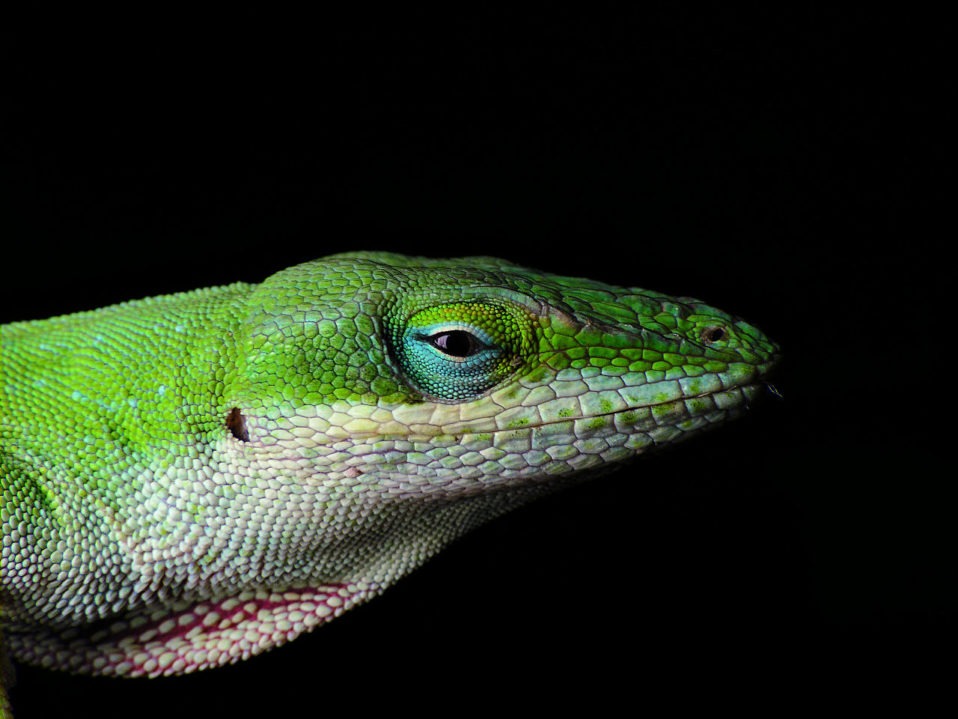Wildlife Wednesday: Common Lizards of the Discovery Center
Recently, we’ve noticed a marked uptick in reptile activity at the nature center. While walking around the park, we’ve seen box turtles, earth snakes, and lizards wandering around, hunting, and even mating all over the park. Over the next couple of weeks, we’ll look at the snakes and turtles here, but today, we’re going to take a look at the 3 most common species of lizard found in Russ Pitman Park.
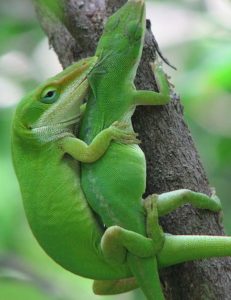 The Green Anole (Anolis carolinensis) is the most commonly seen native lizard in the park. Also called Carolina Anoles, they are sometimes called “chameleons”, because of their ability to change skin color (various shades of green and brown). However, they are not true chameleons, which are found in Africa, the Middle East, and Southern Europe. Green Anoles are conspicuous lizards and excellent climbers, often sunning, fighting, feeding on insects, courting and mating on the sides of houses, fences, trees, bushes, and yard furniture. The males are easy to identify with their pink dewlaps (throat fans) which they extend when trying to court a female or making territorial displays to other males.
The Green Anole (Anolis carolinensis) is the most commonly seen native lizard in the park. Also called Carolina Anoles, they are sometimes called “chameleons”, because of their ability to change skin color (various shades of green and brown). However, they are not true chameleons, which are found in Africa, the Middle East, and Southern Europe. Green Anoles are conspicuous lizards and excellent climbers, often sunning, fighting, feeding on insects, courting and mating on the sides of houses, fences, trees, bushes, and yard furniture. The males are easy to identify with their pink dewlaps (throat fans) which they extend when trying to court a female or making territorial displays to other males.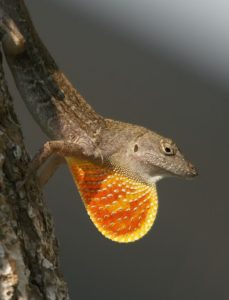
Cuban Brown Anoles (Anolis sagrei) are, as the name suggests, originally from Cuba. They were introduced into the Houston area, possibly in the early 80s or late 70s, from Southern Florida, where they were introduced unintentionally from Cuba. These non-native invasive reptiles are considered to be somewhat deleterious to our native Green Anoles, out-competing them for food resources and eating their young. Brown Anoles are able to change various shades of brown, but unlike Green Anoles, are unable to turn green. The dewlap of the male is a reddish-orange.
The Ground Skink (Scincella lateralis) is a small snake-like lizard, with tiny legs and dark shiny scales. They live beneath leaf litter, rocks, and logs. As with most of our native lizards, they are insectivorous. Though most small lizards can shed their tails, if they are bothered or grabbed, skinks can readily and easily shed their tails off, with very little prompting.
The next time you 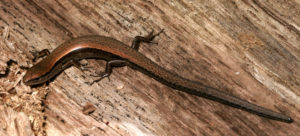
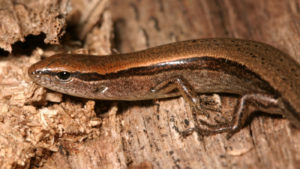 visit, keep an eye out for these reptiles, all over the park. We hope you get a chance to come out and see some of these adorable and dynamic lizards for yourself.
visit, keep an eye out for these reptiles, all over the park. We hope you get a chance to come out and see some of these adorable and dynamic lizards for yourself.
Thanks for joining us!
Eric Duran
Staff Naturalist
Top photo of male Green Anole by PiccoloNamek | Wikimedia; Green Anoles mating by Tom Adams | Wiki; Brown Anole by Hans Hilleweart | Wiki; Ground Skinks by Patrick Coin | Wiki (2)


